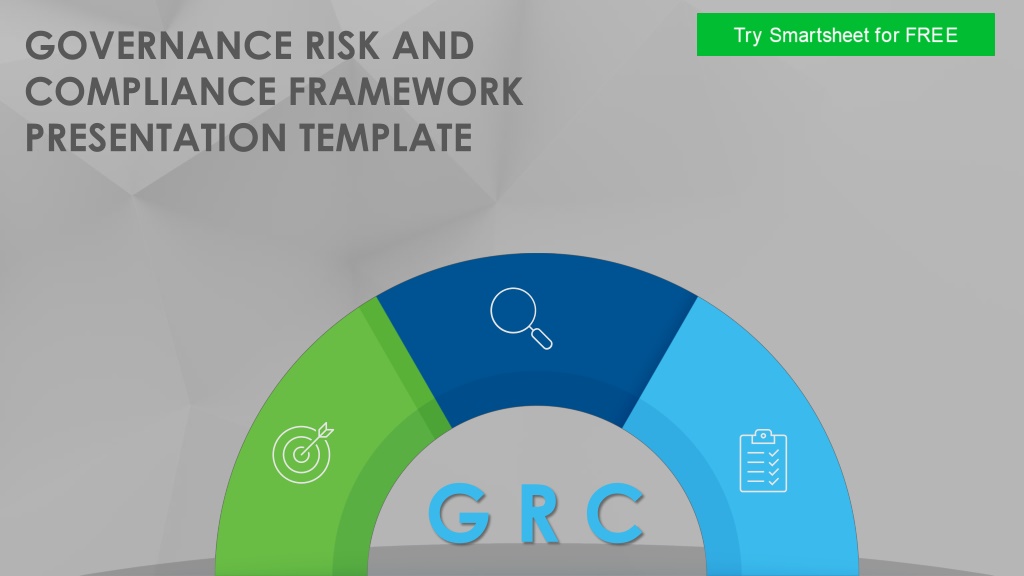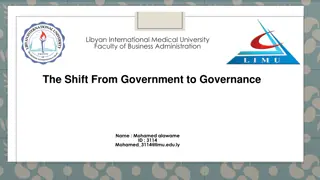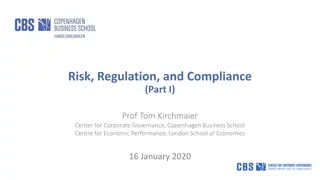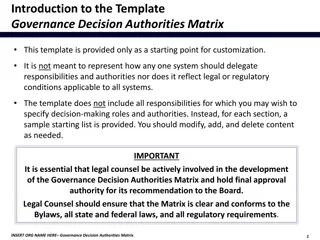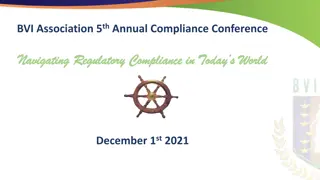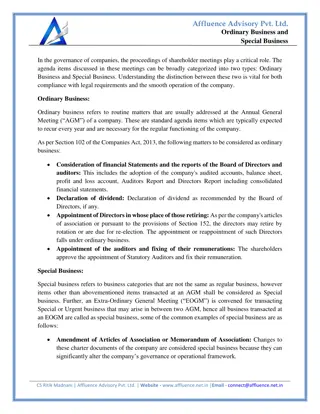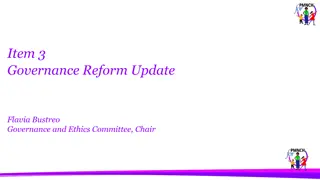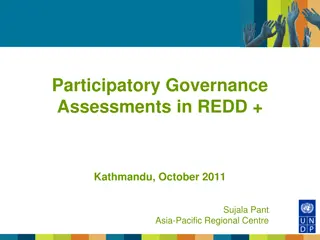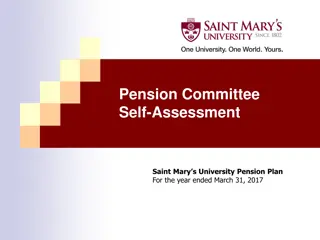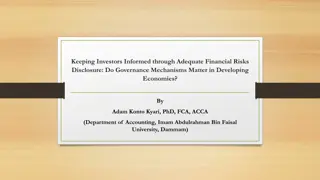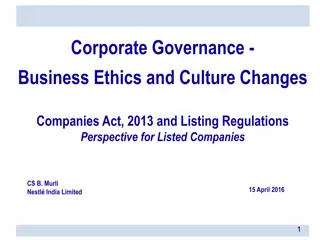Understanding Governance, Risk, and Compliance Framework in Business
Governance, Risk, and Compliance (GRC) are essential components of a robust business strategy. Governance focuses on aligning objectives with stakeholder expectations, Risk Management involves identifying and mitigating threats, and Compliance ensures adherence to regulations. By integrating GRC principles, companies can improve decision-making, protect their reputation, and ensure long-term sustainability, ultimately managing risks effectively and maintaining compliance.
Download Presentation

Please find below an Image/Link to download the presentation.
The content on the website is provided AS IS for your information and personal use only. It may not be sold, licensed, or shared on other websites without obtaining consent from the author. Download presentation by click this link. If you encounter any issues during the download, it is possible that the publisher has removed the file from their server.
E N D
Presentation Transcript
GOVERNANCE RISK AND COMPLIANCE FRAMEWORK PRESENTATION TEMPLATE G R C
Risk Management: Risk Management involves the identification, assessment, and prioritization of risks, followed by coordinated efforts to minimize, monitor, and control their potential impact. Compliance: Compliance ensures that an organization adheres to external regulations, standards, and internal policies in order to avoid penalties and safeguard its reputation. Governance: Governance encompasses the processes, practices, and policies that ensure the effective management and oversight of an organization's operations and strategic direction. risk management governance compliance G R C
Governance Directs and controls organizational operations and decision-making. Ensures alignment of strategic objectives with stakeholder interests. Provides structure for setting company objectives. Oversees management's implementation of policies and procedures. Risk Management Identifies potential threats and their impacts on organizational goals. Develops strategies to mitigate or respond to identified risks. Monitors risk exposure and adjusts strategies as needed. Ensures proactive approach to potential challenges and uncertainties. Compliance Ensures adherence to external laws, regulations, and standards. Implements internal controls and policies to meet compliance requirements. Monitors and reports on compliance status regularly. Addresses non-compliance issues promptly to reduce potential liabilities. G R C
WHAT IS GRC GRC stands for Governance, Risk Management, and Compliance, three integral facets of a holistic business strategy. Governance refers to the structured framework used to align business objectives with stakeholder expectations and ensure effective decision- making. Risk Management involves the identification, assessment, and mitigation of potential threats to an organization's objectives. By adhering to GRC principles, a company can enhance decision-making, protect its reputation, and ensure long-term sustainability. GRC precepts enable an organization to manage risks effectively and maintain compliance with regulatory requirements. Governance By adhering to strong governance principles, your company can ensure that all decision-making processes are transparent, accountable, and aligned with business objectives. Proper governance fosters trust among stakeholders, enhances operational efficiency, and ensures that the company's goals resonate with its core values and stakeholder expectations. Risk Management Effective risk management allows your company to identify, evaluate, and prioritize potential threats and uncertainties. By proactively addressing these risks, the company can safeguard its assets, maintain operational continuity, make informed decisions, and avoid potential pitfalls or costly disruptions. Compliance Compliance ensures that your company adheres to both internal policies and external regulatory requirements. Meeting these standards not only prevents potential legal or financial penalties but also strengthens the company's reputation, builds trust with customers and stakeholders, and provides a competitive advantage in the market. G R C
DISCLAIMER Any articles, templates, or information provided by Smartsheet on the website are for reference only. While we strive to keep the information up to date and correct, we make no representations or warranties of any kind, express or implied, about the completeness, accuracy, reliability, suitability, or availability with respect to the website or the information, articles, templates, or related graphics contained on the website. Any reliance you place on such information is therefore strictly at your own risk.
